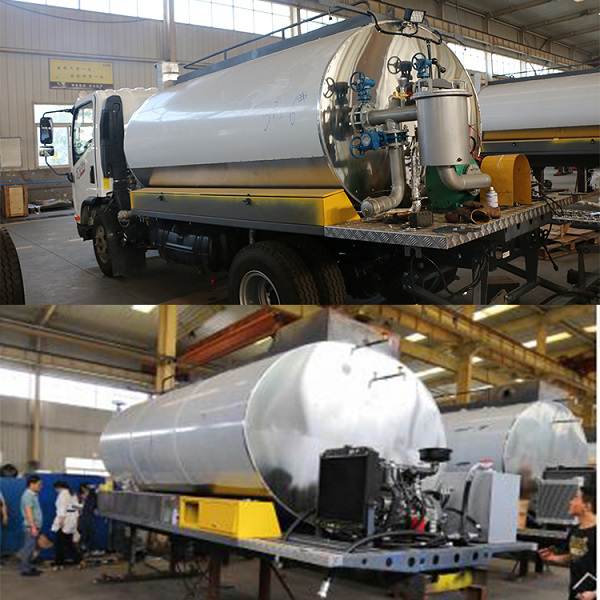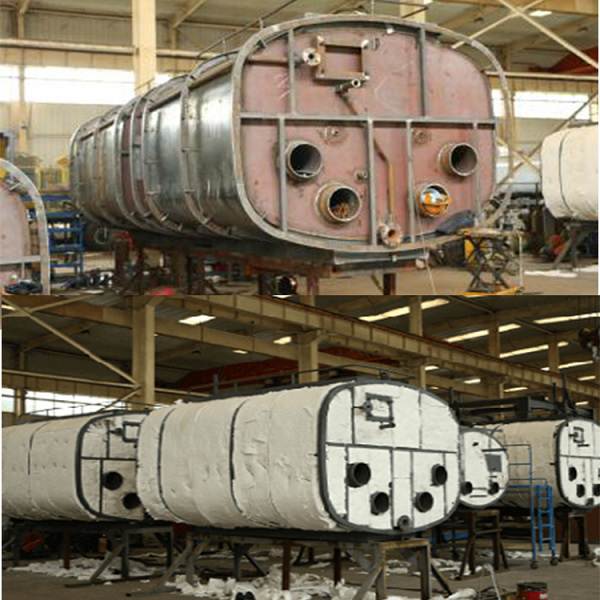Asphalt spreading trucks are a relatively special type of special vehicles. They are mainly used as special mechanical equipment for road construction. Not only do they require high stability and performance of the vehicles during work, but how do they maintain them? Asphalt spreading trucks are used to spread the permeable oil, waterproof layer and bonding layer of the bottom layer of asphalt pavement on high-grade highways. It can also be used in the construction of county and township-level highway asphalt roads that implement layered paving technology. It consists of a car chassis, an asphalt tank, an asphalt pumping and spraying system, a thermal oil heating system, a hydraulic system, a combustion system, a control system, a pneumatic system, and an operating platform. Knowing how to operate and maintain asphalt spreading trucks correctly can not only extend the service life of the equipment, but also ensure the smooth progress of the construction project.
So what issues should we pay attention to when working with asphalt spreading trucks?
Before use, please check whether the position of each valve is accurate and make preparations before work. After starting the motor of the asphalt spreading truck, check the four heat transfer oil valves and air pressure gauge. After everything is normal, start the engine and the power take-off starts to work. Try running the asphalt pump and cycle for 5 minutes. If the pump head shell is hot to your hands, slowly close the thermal oil pump valve. If the heating is insufficient, the pump will not rotate or make noise. You need to open the valve and continue to heat the asphalt pump until it can operate normally.


During the working process, the asphalt liquid must maintain a working temperature of 160~180°C, and cannot be filled too full (pay attention to the liquid level pointer during the injection of asphalt liquid, and check the tank mouth at any time). After the asphalt liquid is injected, the filling port must be closed tightly to prevent the asphalt liquid from overflowing during transportation. During use, the asphalt may not be pumped in. In this case, you need to check whether the interface of the asphalt suction pipe is leaking. When asphalt pumps and pipes are blocked by solidified asphalt, use a blowtorch to bake them, but do not force the pump to turn. When baking, care should be taken to avoid directly baking ball valves and rubber parts. The car keeps driving at a low speed while the asphalt is sprayed. Do not step on the accelerator hard, otherwise it may cause damage to the clutch, asphalt pump and other components. If you are spreading 6m wide asphalt, you should always pay attention to the obstacles on both sides to prevent collision with the spreading pipe. At the same time, the asphalt should remain in a large circulation state until the spreading work is completed. After every day's work, any remaining asphalt must be returned to the asphalt pool, otherwise it will solidify in the tank and will not work next time.
In addition, the emulsifier must also pay attention to daily maintenance:
1. The emulsifier, delivery pump, and other motors, mixers, and valves should be maintained on a daily basis.
2. The emulsifying machine should be cleaned after every day's work.
3. The accuracy of the speed-regulating pump used to control flow should be checked regularly and adjusted and maintained in a timely manner. The asphalt emulsifying machine should regularly check the matching gap between its stator and rotor. When the small gap specified by the machine cannot be reached, replacement of the stator and rotor should be considered.
4. If the equipment is out of service for a long time, the liquid in the tank and pipes should be emptied (the emulsifier aqueous solution should not be stored for a long time), each hole cover should be tightly closed and kept clean, and all running parts should be filled with lubricating oil. The rust in the tank should be removed when using it for the first time and when it is restarted after a long period of inactivity, and the water filter should be cleaned regularly.
5. Regularly check whether the terminals in the electrical control cabinet are loose and whether the wires are worn during shipment. Remove dust to avoid damage to the machine parts. The frequency converter is a precision instrument. Please refer to the instruction manual for specific use and maintenance.
6. There is a heat transfer oil coil in the emulsifier aqueous solution heating mixing tank. When injecting cold water into the water tank, you should first turn off the heat transfer oil switch and add the required
amount of water and then turn on the switch to heat. Directly pouring cold water into the high-temperature heat transfer oil pipeline can easily cause the welding joint to crack.
 Albanian
Albanian  Russian
Russian  Arabic
Arabic  Amharic
Amharic  Azerbaijani
Azerbaijani  Irish
Irish  Estonian
Estonian  Odia (Oriya)
Odia (Oriya)  Basque
Basque  Belarusian
Belarusian  Bulgarian
Bulgarian  Icelandic
Icelandic  Polish
Polish  Bosnian
Bosnian  Persian
Persian  Afrikaans
Afrikaans  Tatar
Tatar  Danish
Danish  German
German  French
French  Filipino
Filipino  Finnish
Finnish  Frisian
Frisian  Khmer
Khmer  Georgian
Georgian  Gujarati
Gujarati  Kazakh
Kazakh  Haitian Creole
Haitian Creole  Korean
Korean  Hausa
Hausa  Dutch
Dutch  Kyrgyz
Kyrgyz  Galician
Galician  Catalan
Catalan  Czech
Czech  Kannada
Kannada  Corsican
Corsican  Croatian
Croatian  Kurdish (Kurmanji)
Kurdish (Kurmanji)  Latin
Latin  Latvian
Latvian  Lao
Lao  Lithuanian
Lithuanian  Luxembourgish
Luxembourgish  Kinyarwanda
Kinyarwanda  Romanian
Romanian  Malagasy
Malagasy  Maltese
Maltese  Marathi
Marathi  Malayalam
Malayalam  Malay
Malay  Macedonian
Macedonian  Maori
Maori  Mongolian
Mongolian  Bengali
Bengali  Myanmar (Burmese)
Myanmar (Burmese)  Hmong
Hmong  Xhosa
Xhosa  Zulu
Zulu  Nepali
Nepali  Norwegian
Norwegian  Punjabi
Punjabi  Portuguese
Portuguese  Pashto
Pashto  Chichewa
Chichewa  Japanese
Japanese  Swedish
Swedish  Samoan
Samoan  Serbian
Serbian  Sesotho
Sesotho  Sinhala
Sinhala  Esperanto
Esperanto  Slovak
Slovak  Slovenian
Slovenian  Swahili
Swahili  Scots Gaelic
Scots Gaelic  Cebuano
Cebuano  Somali
Somali  Tajik
Tajik  Telugu
Telugu  Tamil
Tamil  Thai
Thai  Turkish
Turkish  Turkmen
Turkmen  Welsh
Welsh  Uyghur
Uyghur  Urdu
Urdu  Ukrainian
Ukrainian  Uzbek
Uzbek  Spanish
Spanish  Hebrew
Hebrew  Greek
Greek  Hawaiian
Hawaiian  Sindhi
Sindhi  Hungarian
Hungarian  Shona
Shona  Armenian
Armenian  Igbo
Igbo  Italian
Italian  Yiddish
Yiddish  Hindi
Hindi  Sundanese
Sundanese  Indonesian
Indonesian  Javanese
Javanese  Yoruba
Yoruba  Vietnamese
Vietnamese  Hebrew
Hebrew  Chinese (Simplified)
Chinese (Simplified)







